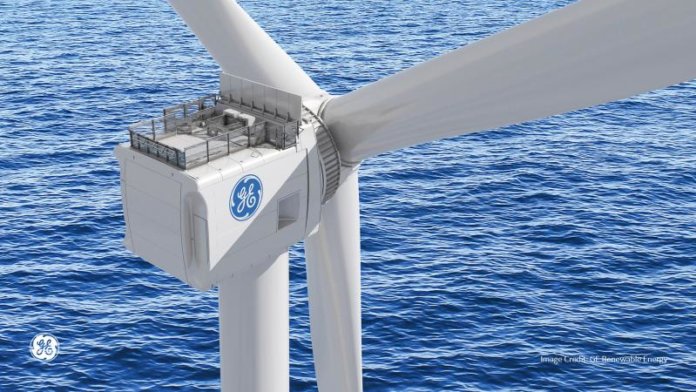GE Renewable Energy has confirmed that the nacelle and 107-meter blade for its Haliade-X 12 MW turbine will be shipped to the U.K. as part of a testing program focused on enhancing the platform before it enters serial production in 2021.
The Haliade-X nacelle, comparable to six London Double-Deckers piled up, along with the world’s longest wind turbine blade, will be transported from GE’s production facilities in Saint-Nazaire and Cherbourg, France, to ORE Catapult’s testing facilities in Blyth in the northeast of England in the months to come.
The Haliade-X 12 MW nacelle will undergo a program that will replicate real-world operational conditions to reduce the time required to validate performance and reliability. In addition, the 107-meter LM Wind Power blade will undergo a range of testing procedures (including static and fatigue) to fully demonstrate the blade’s ability to withstand peak wind conditions and to simulate the blade’s readiness for years of operation at sea.
“We want to bring the most powerful offshore wind turbine to the world’s largest offshore wind market and contribute with our technology to support the U.K.’s Offshore Wind Sector Deal goal (30 GW by 2030), and U.K. government’s ambition to work for greenhouse emission reduction to ‘net-zero’ by 2050,” states John Lavelle, president and CEO of GE’s offshore wind business.
“The extensive experience across the U.K. offshore wind industry provides us with the opportunity to partner with various institutions, such as ORE Catapult, that allow us to test our technology while fostering competitiveness and partner with local supply-chain players that want to innovate with us and be part of the U.K.’s offshore wind momentum,” adds Lavelle.
Andrew Jamieson, CEO of ORE Catapult, says, “Our world-leading, larger-scale test facilities, technical expertise and in-depth knowledge of the U.K. offshore wind sector have made us the ideal partner for GE in their development of the world’s largest and most advanced offshore wind turbine. Through our collaboration, we will deliver increased U.K. research, supply-chain development, reduced cost of energy and a significant step on the path to net-zero.”




